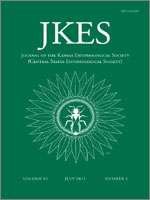A new fossil rove beetle, Juroglypholoma antiquum n. gen. n. sp., is described and figured based on a well-preserved specimen from the Middle Jurassic Daohugou biota (ca. 165 Ma), Inner Mongolia, northeastern China. It represents the first fossil belonging to one of the smallest and latest recognized staphylinid subfamilies, Glypholomatinae, which is now endemic to the Southern Hemisphere. The new genus is assigned to Glypholomatinae based on its body shape and size, clubbed antennae, relatively long elytra, abdominal intersegmental membranes with brick-wall-like pattern, metacoxae slightly excavate to receive the short metafemora, and paired curved ridges in the anterolateral margins of sternites IV–VI. It can be easily separated from the extant genera Glypholoma and Proglypholoma by a combination of shorter elytra with apical four abdominal segments exposed; and antennomeres 1 and 2 normal, not dilated, apical three antennomeres forming a slight club. The first discovery of a new species from the Middle Jurassic of China illustrates the antiquity of Glypholomatinae, and indicates that the Omaliine group of subfamilies had already originated by the Middle Jurassic.
How to translate text using browser tools
1 July 2012
Glypholomatine Rove Beetles (Coleoptera: Staphylinidae): a Southern Hemisphere Recent Group Recorded from the Middle Jurassic of China
Chenyang Cai,
Diying Huang,
Margaret K. Thayer,
Alfred F. Newton
ACCESS THE FULL ARTICLE
China
Daohugou
Glypholomatinae
Middle Jurassic
new genus





